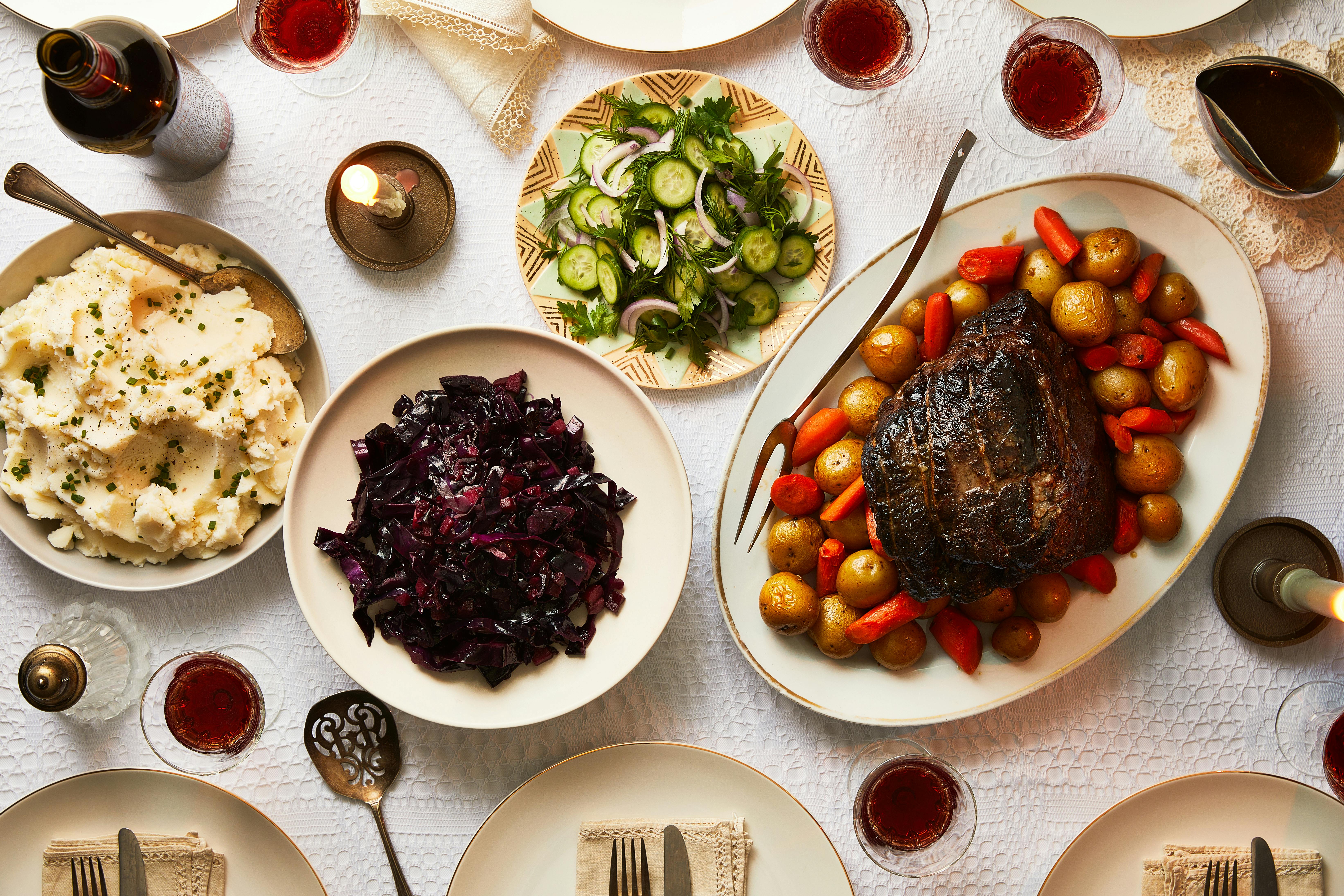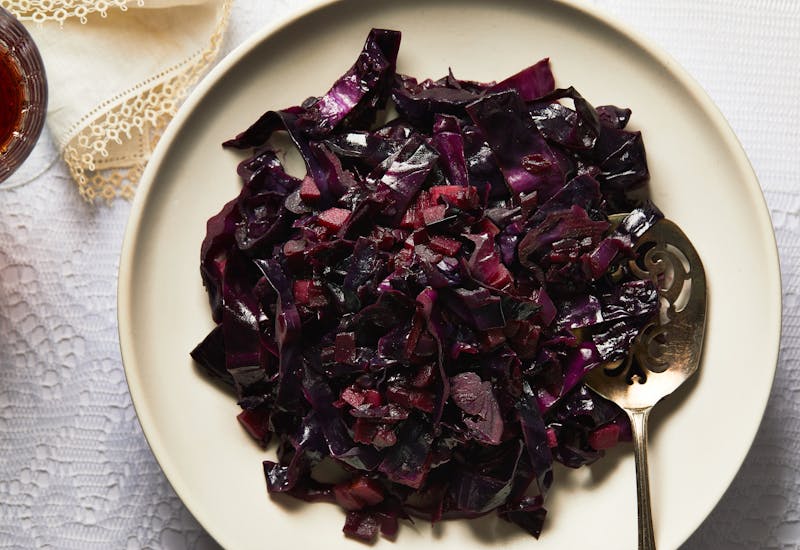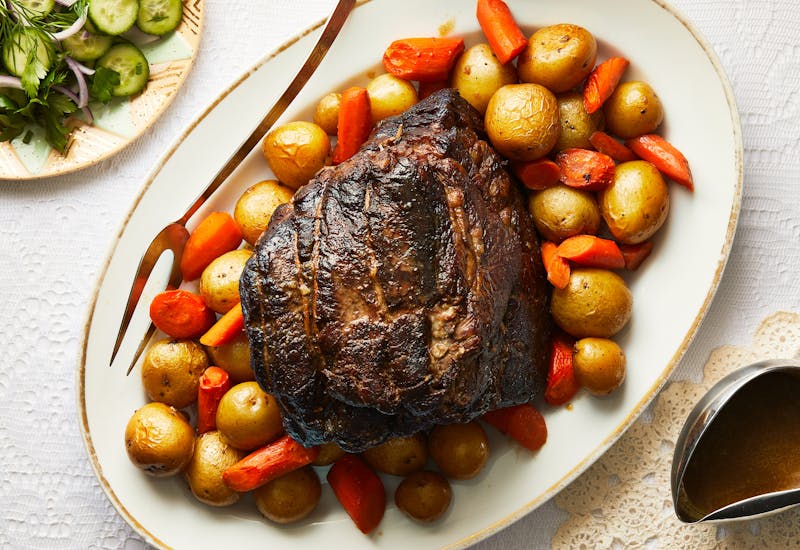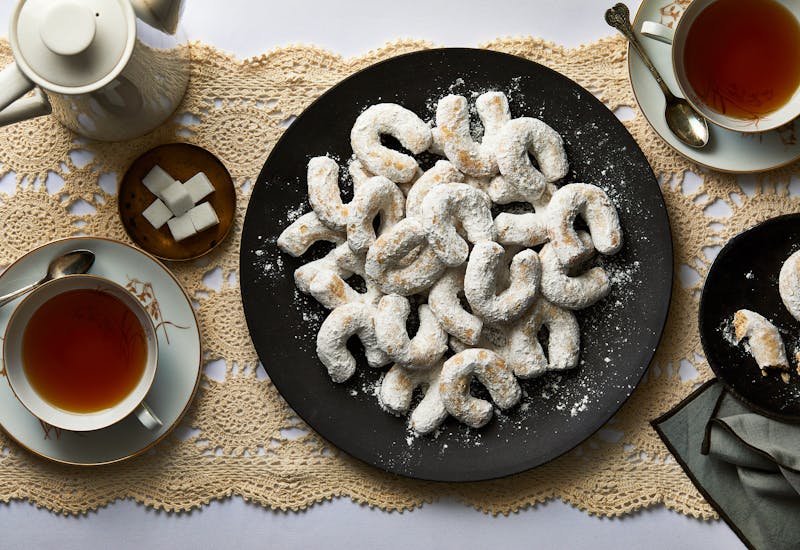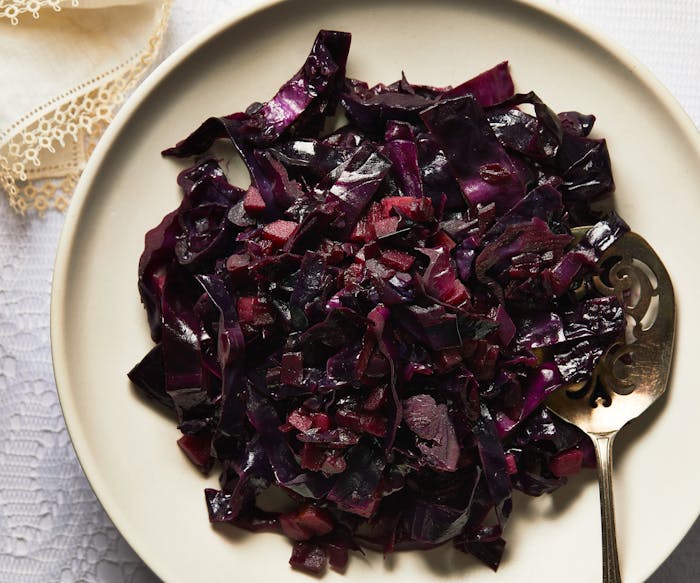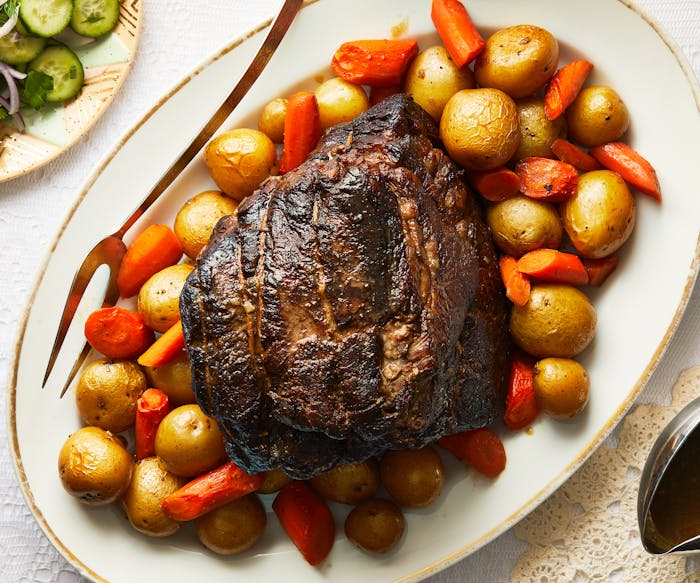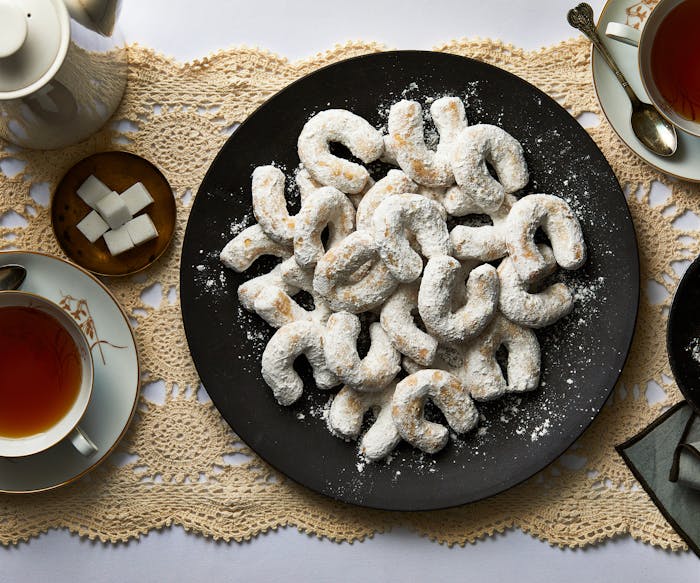Shared by Frances Largeman-Roth
How a Jewish Convert From Germany Found Acceptance in the Kitchen
How a Jewish Convert From Germany Found Acceptance in the Kitchen
Family Journey
During World War II, there was a two sided photo at the inn Lore Grimm’s parents owned in Bad Nauheim, Germany. Her family were gentiles and “every business had to have a photo of Hitler, so they had [one],” explains Lore’s daughter, cookbook author Frances Largeman-Roth. “I don’t know what was on the other side — a landscape, or something else — when they would hear the soldier coming, they would turn it around to the Hitler side.”
Born in 1935, her mother grew up in that inn and she would tell Frances stories from her time there including one about a chambermaid who spread bed bugs all over the inn “and they knew that it was her because she had slept with a traveler,” Frances shares. A story she was fond of telling was how she fell in love with her husband’s dogs, two huskies named Peaches and Cream, before she fell in love with him.
An American Ashkenazi Jew, Howard was stationed as an army dentist near the inn after the war and would bring dates — and the dogs — to the inn where she worked as a server in the restaurant. One day, he arrived without a date and asked her out. There was a 12 year age gap between them and Lore was only 17 years old when they met, but they were married two years later in 1954. “Now, it seems really outlandish,” Frances says. But, at the time, neither family saw it as strange. Howard’s mother Selma, was more concerned that Lore was German — and not Jewish. “This was right after the war,” Frances explains.
Lore converted to Judaism, but it was never quite enough for Selma, who was born in Poland around 1900 and came to the U.S. as a child. “It was not an open arms welcome. My mom had to chip away and always be on her best behavior,” Frances adds.
When Selma would visit Frances’s family in Salamanca, New York, where they settled, she would stuff her bags with Jewish foods like bagels, bialys, herring and pickled tongue that she brought with her from Brooklyn. And when she came for Passover, she brought her own set of kosher plates. Lore learned about Jewish traditions from her like how to keep kosher for the holiday. “She really wanted to do it to the letter and to show my grandmother that she was serious about being Jewish,” says Frances.
Where her mother found approval was through cooking. While Selma’s cooking consisted of “boiled chicken and food that had been cooked to death,” Frances explains, her mother roasted whole chickens and braised pot roast until it was tender for her five children. Her mother learned to cook at the inn and continued to make her family recipes like sweet and sour red cabbage studded with apples, plum cake, and crescent-shaped cookies called vanillekipferl. She mastered some Jewish dishes as well, like matzah ball soup and hamantaschen — which she likely learned through their synagogue sisterhood and a few mid-century Jewish cookbooks.
“I think my grandmother was really impressed by these feasts that she could put together,” says Frances. “I think that was where they found some mutual respect and common ground.”
A generation later, Frances says she also sees these German recipes her mother prepared as a connection to her home country and her parents. “Every time I make her recipes, it brings back a ton of memories and it makes me feel like I'm sort of connecting the dots.”
